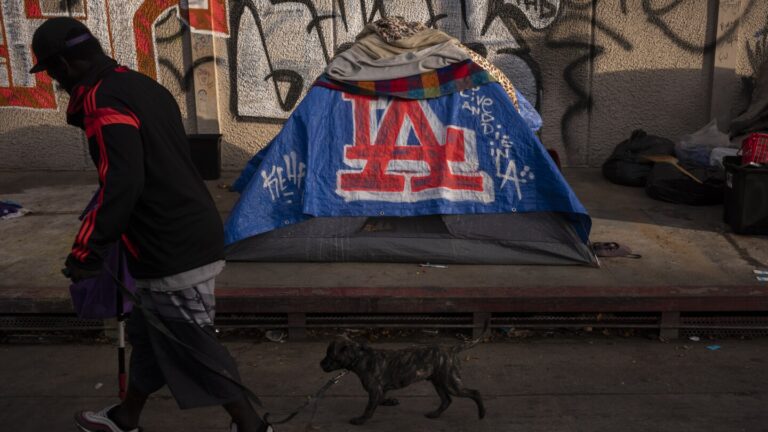The United States saw an 18.1% increase in homelessness this year, a significant rise driven mostly by housing shortages. Affordable housing As well as devastating natural disasters A wave of immigrants Federal officials said Friday in several parts of the country.
The U.S. Department of Housing and Urban Development said federally required statistics conducted across the country in January found that more than 770,000 people were considered homeless — a number that does not include some people and does not include those who are staying with friends or family because they do not have shelter. . A place of their own.
This increase comes on top of A An increase of 12% in 2023which HUD blamed on rising rents and the end of pandemic assistance. The increase in 2023 was also driven by people experiencing homelessness for the first time. The numbers overall represent 23 out of every 10,000 people in the United States, with blacks overrepresented among the homeless population.
“No American should face homelessness, and the Biden-Harris Administration is committed to ensuring every family has access to the affordable, safe, and quality housing they deserve,” Adrian Todman, head of the HUD agency, said in a statement, adding that the focus must remain. On “Evidence-Based Efforts to Prevent and End Homelessness.”
Among the most troubling trends is the nearly 40% rise in family homelessness – one of the areas most affected by the arrival of migrants. Migrants in major cities. Family homelessness doubled in 13 communities impacted by immigrants, including Denver, Chicago and New York, according to HUD, while rising by less than 8% in the remaining 373 communities. Nearly 150,000 children experienced homelessness on a single night in 2024, reflecting a 33% jump from last year.
Disasters have also played a role in the high number, especially the catastrophic wildfires on Maui last year. The deadliest wildfires in the United States In more than a century. More than 5,200 people were staying in emergency shelters in Hawaii on the night of the count.
“Increasing homelessness is the tragic, but predictable, result of a lack of investment in the resources and protections that help people find and maintain safe, affordable housing,” Renee Willis, the new interim CEO of the National Low Income Housing Coalition, said in a statement. “As advocates, researchers, and people with life experience have warned, the number of people experiencing homelessness continues to grow as more people struggle to afford high housing costs.”
The numbers are also increasing Numbers of communities They take a hard line against homelessness.
Outraged by dangerous and often dirty tent camps, communities – especially in Western countries – have imposed bans on camping. This is followed by a 6-3 ruling last year by the Supreme Court Which found that prohibiting outdoor sleeping does not violate the Eighth Amendment. Homeless advocates argued that punishing people who need a place to sleep would criminalize homelessness.
There was some positive news in the count, as well Homelessness among veterans The downward trend continued. Homelessness among veterans fell 8% to 32,882 in 2024. This was an even greater decline for unsheltered veterans, who fell 11% to 13,851 in 2024.
“The decline in veteran homelessness provides us with a clear roadmap to address homelessness more broadly,” Anne Oliva, CEO of the National Alliance to End Homelessness, said in a statement. “With bipartisan support, adequate funding, and smart policy solutions, we can replicate this success and reduce homelessness nationwide. Federal investments are critical to addressing the nation’s housing affordability crisis and ensuring every American has access to safe, stable housing.”
Many major cities have succeeded in reducing their homeless numbers. Dallas, which has worked to reform its homeless system, saw its numbers decline by 16% between 2022 and 2024. Los Angeles, which has increased housing for the homeless, has seen a 5% decline in the number of unsheltered homeless people since 2023. California, the most populous city and state in the United States, remains the country's largest homeless population, followed by New York, Washington, Florida and Massachusetts.
The sharp increase in the homeless population over the past two years contrasts with the success the United States has had for more than a decade.
Going back to the first survey conducted in 2007, the United States has made steady progress for nearly a decade in reducing the homeless population, with the government particularly focused on increasing investments to attract veterans into housing. The number of homeless people decreased from about 637,000 in 2010 to about 554,000 in 2017.
Numbers rose to about 580,000 in the 2020 census and remained relatively steady over the next two years as Congress responded to the COVID-19 pandemic with… Emergency rental assistancestimulus payments, Aid to states and local governments And temporary Eviction moratorium.
